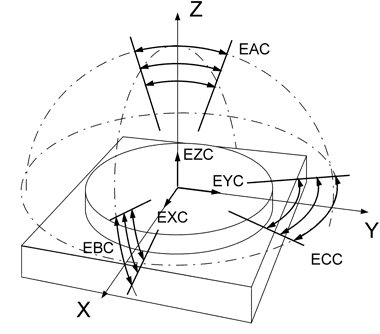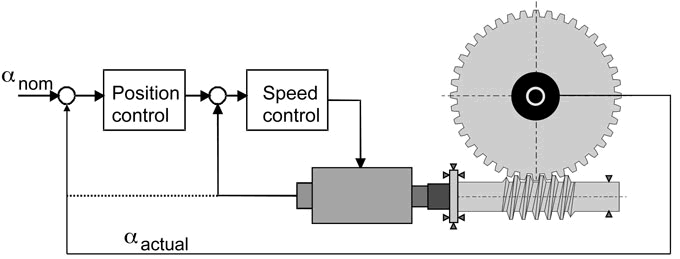January 24, 2012
What influences accuracy of rotary tables?
by Nathan Mathiot
HEIDENHAIN Product Specialist

When determining the influencing factors of accuracy on a rotary table, the first thing would be to look at the mechanics of the table itself.
A rotary table contains six degrees of freedom and this is shown in Figure 1. EXC, EYC and EZC represent the radial and axial error motion of the rotary table. EAC and EBC represent the tilt error motion whereas ECC represents the angular positioning error. Each one of these motions can add to the total amount of positioning error in the rotary table.
Typically, a rotary table is driven by a worm gear which is connected to a motor with a rotary encoder on the back of it. The table’s position can be determined by the number of pulses transmitted from the encoder to the control.
The four major error sources due to semi-closed position loop are geometrical errors, thermal deformations, elasticity and wear. The sum of these errors is known as the angular positioning error (ECC). To greatly reduce the amount of angular positioning error, the ideal position to mount an angle encoder is on the axis of rotation being measured. With an angle encoder mounted underneath the rotary table and the rotary encoder on the back motor, the position loop is now considered to be a closed loop system (Figure 2).

If you have any questions, please let us know.
Nathan Mathiot
HEIDENHAIN Product Specialist
847-519-3398

